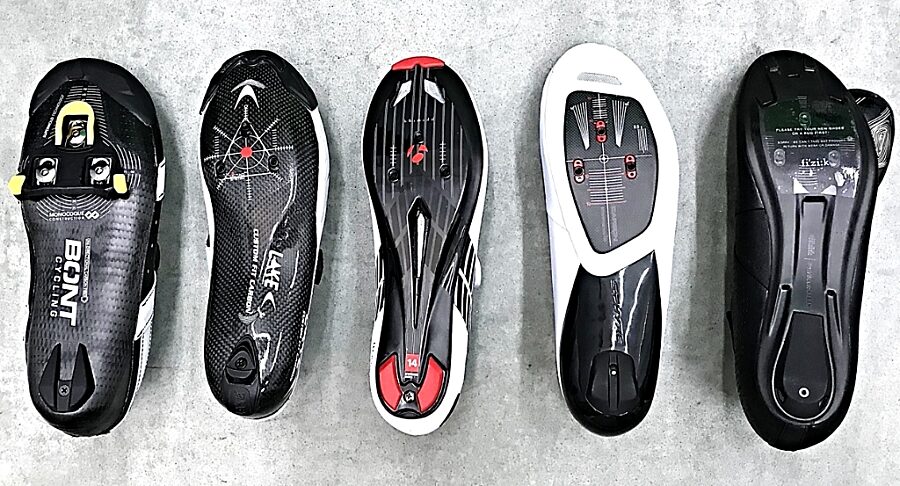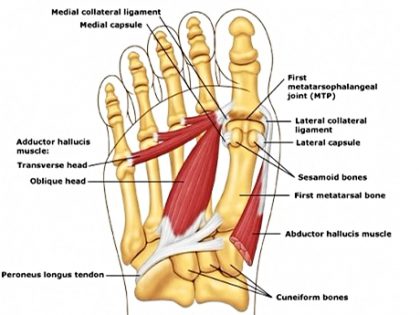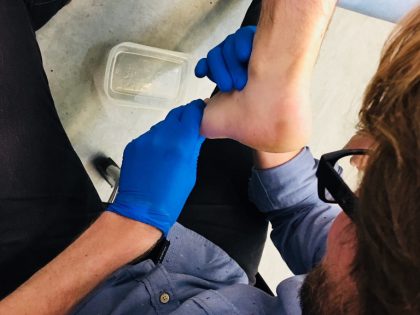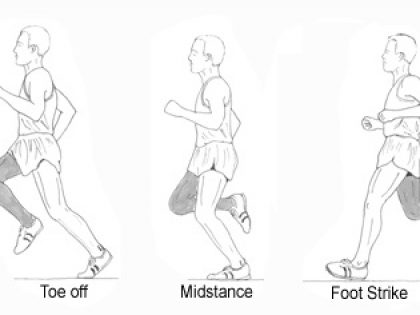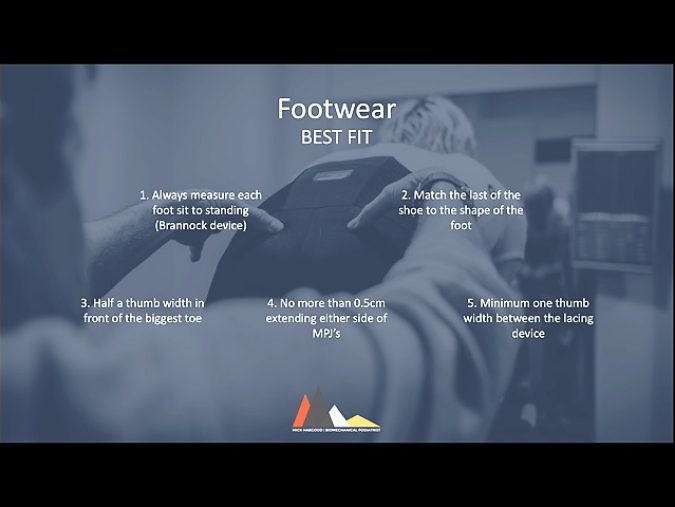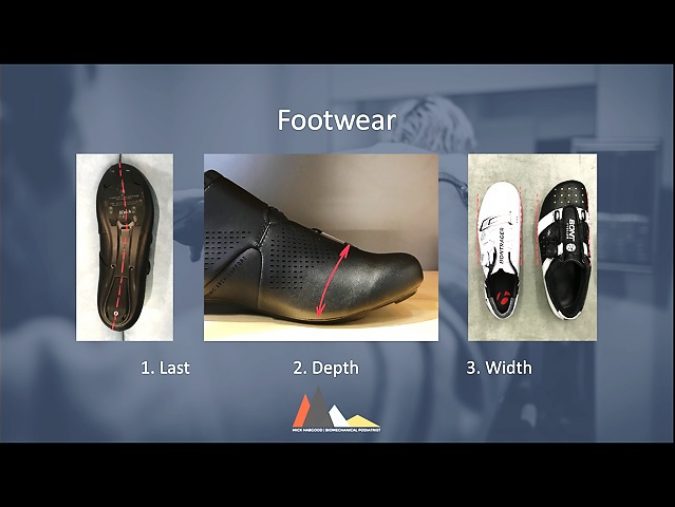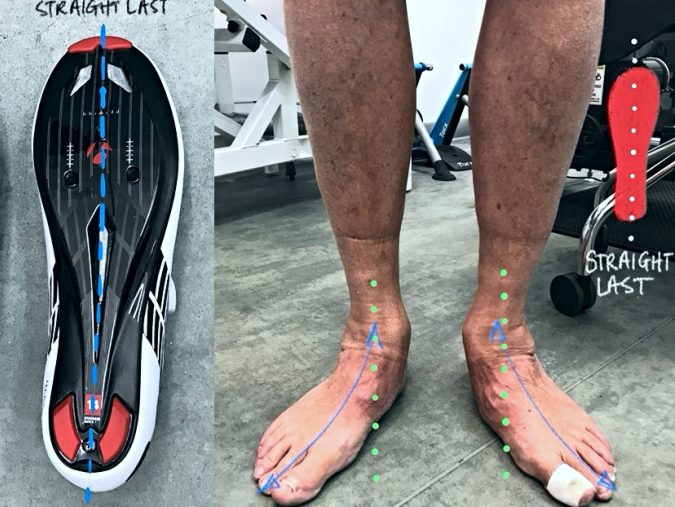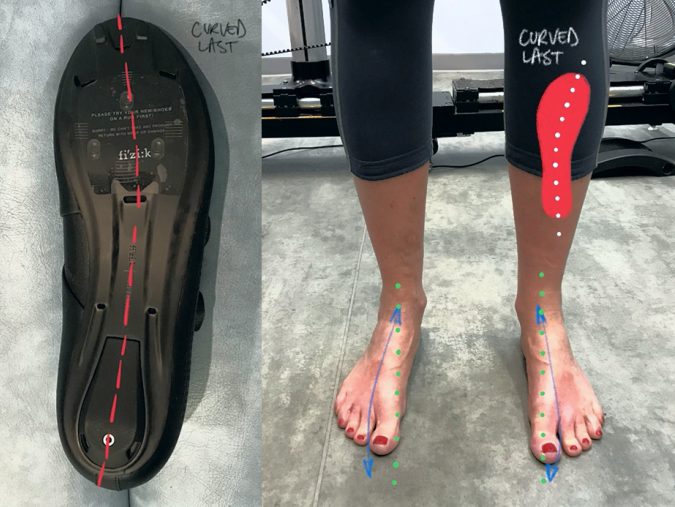If The Shoe Fits. Then Wear it!
The Fixed Foot
The challenges that face the cycling foot are more similar to skiing than they are to running. The natural running foot goes through a dynamic phase of motion from heel-strike to mid-stance to a propulsive toe- off from the 1st MTPJ (big-toe joint). The foot is loading and unloading throughout the phase of motion. In cycling the foot is effectively static throughout the pedalling cycle - this changes slightly as you stand and climb, but the foot is still not working through its natural phasing. Like skiing, cycling often causes foot pain or numbness, normally associated with adverse pressure. Foot issues are one of the most common issues that people flag up in a Cyclefit - including:
- Hot foot
- Numbness
- Metatarsal pain
- Pressure on the outside of the foot
- Pain on the top of the foot
Stiffness, Built-In!
Additionally in cycling the foot is interfacing with a sole that is many time stiffer than what it is used to. Most good walking/running shoes are designed to flex only under the metatarsals - in contrast cycling shoes are specifically designed to resist any flexion at that point. Getting a cycle shoe that fits is quite time-consuming and technical. So many factors and variables need to be considered. With the help of Cyclefit's Fixed-Foot Specialist Podiatrist, Mick Habgood, we try and help you take the first step to getting the perfect shoe-fit!
Footwear - Best Fit
ShoeFit - Gold Standard
Online shopping has its place. But never when buying cycling shoes (unless you are replacing like for like and size for size). In our experience over 50% of people are using an inappropriate shoe - either size or design! The gold-standard for buying cycling shoes is:
- Detailed measurements from both feet (most people are slightly different)
- Match the last of the shoe to the shape of the foot (trickier than it sounds) - see below
- Half-a-thumb width in front of the the biggest toe (not necessarily the big-toe by the way)
- No more than 5mm either side of 1st or 5th MPJ's (big and little toe-joints)
- Minimum one-thumb width between the lacing device
At Cyclefit we measure both feet for:
- Foot-length
- Foot-width
- Arch-length
- Standing (weight bearing) arch-height
- Seated (non-weight bearing)
Right foot, Wrong Shoe!
To be clear, these are not easy choices. The majority of us are in a shoe that is either inappropriate or at least not optimal. Manufacturers make their shoes in many shapes and styles. Often their last philosophy is a hangover from decades ago that is long forgotten, but has now become part of their brand identity. But what is certainly true is that your foot-type will have a shoe that suits it best. Imagine the foot on the left in the show on the right and vice-versa? The result would be a lack of performance and function or even discomfort and pain.

